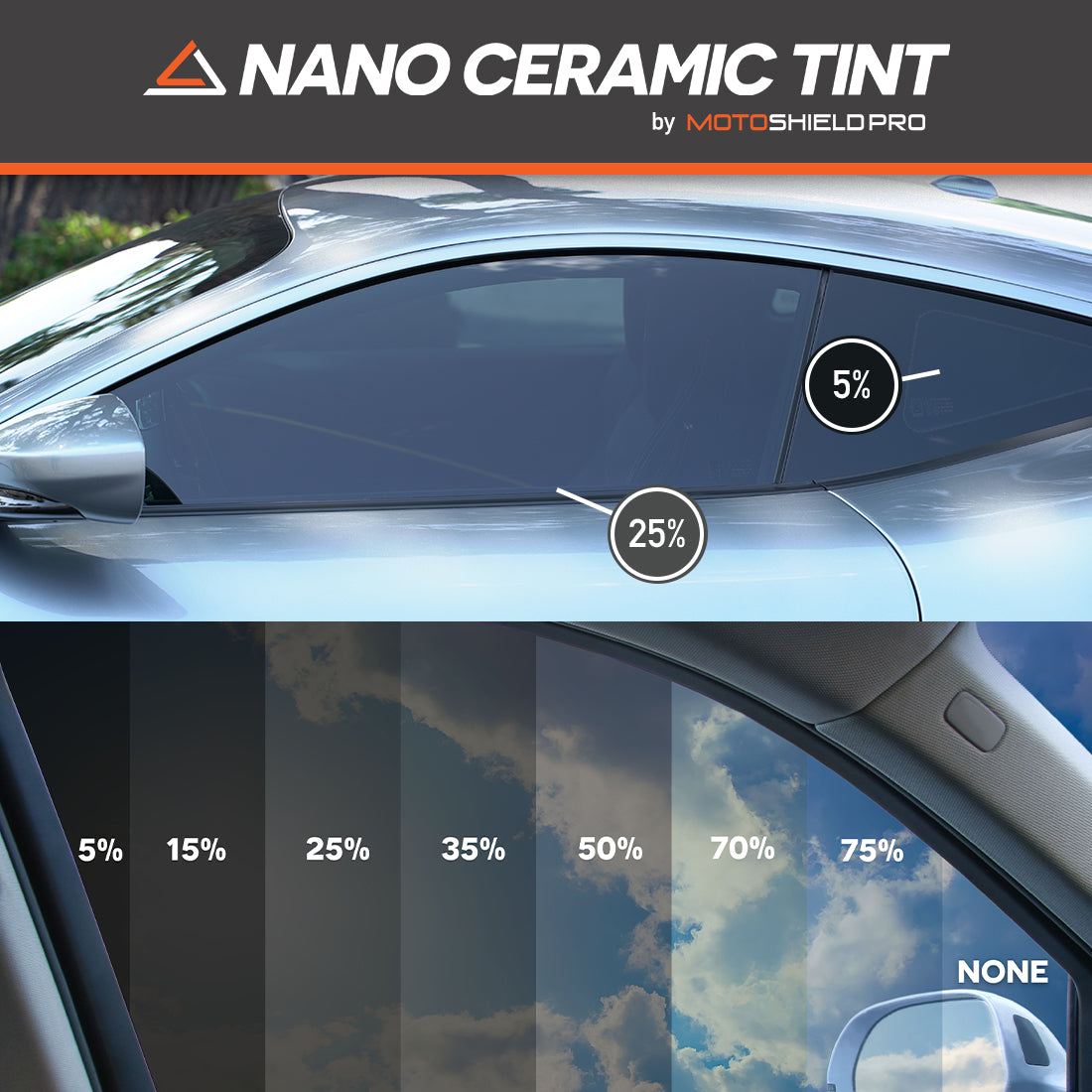Recognizing the Different Types of Auto Window Tinting: Which One Is Right for You?
The choice of automobile window tinting can significantly influence both the functionality and appearances of your car. With numerous options offered, such as dyed, metalized, ceramic, and hybrid tints, each presents unique benefits tailored to particular needs and preferences. Understanding these differences is vital for making an enlightened selection that lines up with your way of living and budget plan. As you consider the ramifications of each type, it begs the inquiry: which elements will ultimately direct your choice in this diverse landscape?
Overview of Vehicle Window Tinting
Car window tinting is a popular adjustment among car proprietors, providing both visual allure and practical benefits. By using a slim movie to lorry windows, proprietors can improve the appearance of their vehicles while additionally gaining considerable functional benefits. The primary purpose of window tinting is to minimize glow and heat from the sunlight, which can lead to an extra comfy driving experience. In addition, colored home windows aid shield the inside of the automobile from hazardous UV rays, minimizing the danger of fading and deterioration of furniture and control panel products.
Colored windows can prevent potential thieves by making it extra tough to see prized possessions left inside the car. Eventually, auto window tinting offers as a multifunctional improvement that combines design with security, making it a worthy consideration for vehicle owners looking for to improve their driving experience - Chavez Auto Detailing Window Tinting.
Types of Window Tinting
Discovering the various kinds of window tinting discloses a variety of options tailored to meet various demands and preferences. One of the most typical types include colored, metalized, ceramic, and crossbreed tints.
Dyed window color involves a layer of color related to the movie, supplying a streamlined appearance and minimizing glow. While it effectively obstructs UV rays, it might not use the very same degree of warmth being rejected as various other types.
Metalized home window tint includes little metal fragments that reflect heat and UV rays. This type enhances longevity and includes stamina to the glass yet can interfere with electronic signals, such as general practitioner and mobile phone function.
Ceramic window tint is a premium option that makes use of advanced technology to supply exceptional heat being rejected and UV security without the drawbacks of steel disturbance. It preserves presence while using a high level of comfort.
Crossbreed color combines dyed and metalized aspects, supplying a balanced remedy that provides both aesthetic allure and efficiency. Each type has special attributes that affect elements like look, warmth denial, and signal disturbance, allowing consumers to discover here pick based upon certain demands and preferences.
Benefits of Each Color Kind

Metalized window tint, on the other hand, boosts durability and warmth rejection. The metallic particles embedded in the film show warm and UV rays, thereby maintaining a cooler interior and securing furniture from fading. This kind also includes an added layer of personal privacy because of its reflective residential or commercial properties.
Ceramic window tint is acclaimed for its remarkable efficiency. It blocks as much as 99% of UV rays and significantly minimizes warm without hindering electronic signals, making it ideal for modern vehicles furnished with sophisticated modern technology. It has a tendency to be pricier, its longevity and performance frequently validate the investment.
Elements to Take Into Consideration
When picking the suitable window color for a car, numerous important elements enter play that can dramatically affect the final choice. The lawful guidelines pertaining to window tinting differ by state and locality. Comprehending these legislations is important to make sure and stay clear of possible penalties compliance with regional criteria.
One more important factor to consider is the level of warm and UV protection wanted. Different tint kinds provide varying levels of warm rejection and UV security, affecting both comfort and the longevity of the vehicle's inside. Furthermore, one should consider the visual allure like it of the color, as some alternatives might boost the car's appearance while others might diminish it.

Making Your Choice
After considering the numerous aspects entailed in picking the right window color, the decision-making process can begin. Begin by assessing your key goals for tinting. Whether your focus gets on UV defense, warmth decrease, personal privacy, or appearances will significantly affect your selection.
Next, examine the legal restrictions in your area pertaining to home window color darkness and reflectivity (Chavez Auto Detailing Window Tinting). Compliance with local laws is important to make certain and stay clear of penalties security

In addition, think about the durability and guarantee of the product. Investing in a higher-quality film may originally cost even more however can conserve money gradually with toughness and reduced requirement for replacement.
Verdict
In final thought, choosing the ideal type of car window tinting demands cautious consideration of private needs and choices. Each color type-- dyed, metalized, ceramic, and crossbreed-- offers distinctive benefits, varying from cost-effectiveness to improved toughness and UV protection.
Each type of window tinting deals distinctive benefits that provide to varying preferences and demands. Colored home window tint is popular for its visual charm, giving a sleek appearance while decreasing glow and blocking damaging UV rays.Metalized window color, on the various other hand, visit this web-site enhances durability and warmth rejection.When selecting the proper home window tint for a vehicle, a number of crucial variables come right into play that can significantly affect the last decision.In final thought, picking the suitable type of vehicle home window tinting demands cautious consideration of individual needs and preferences.